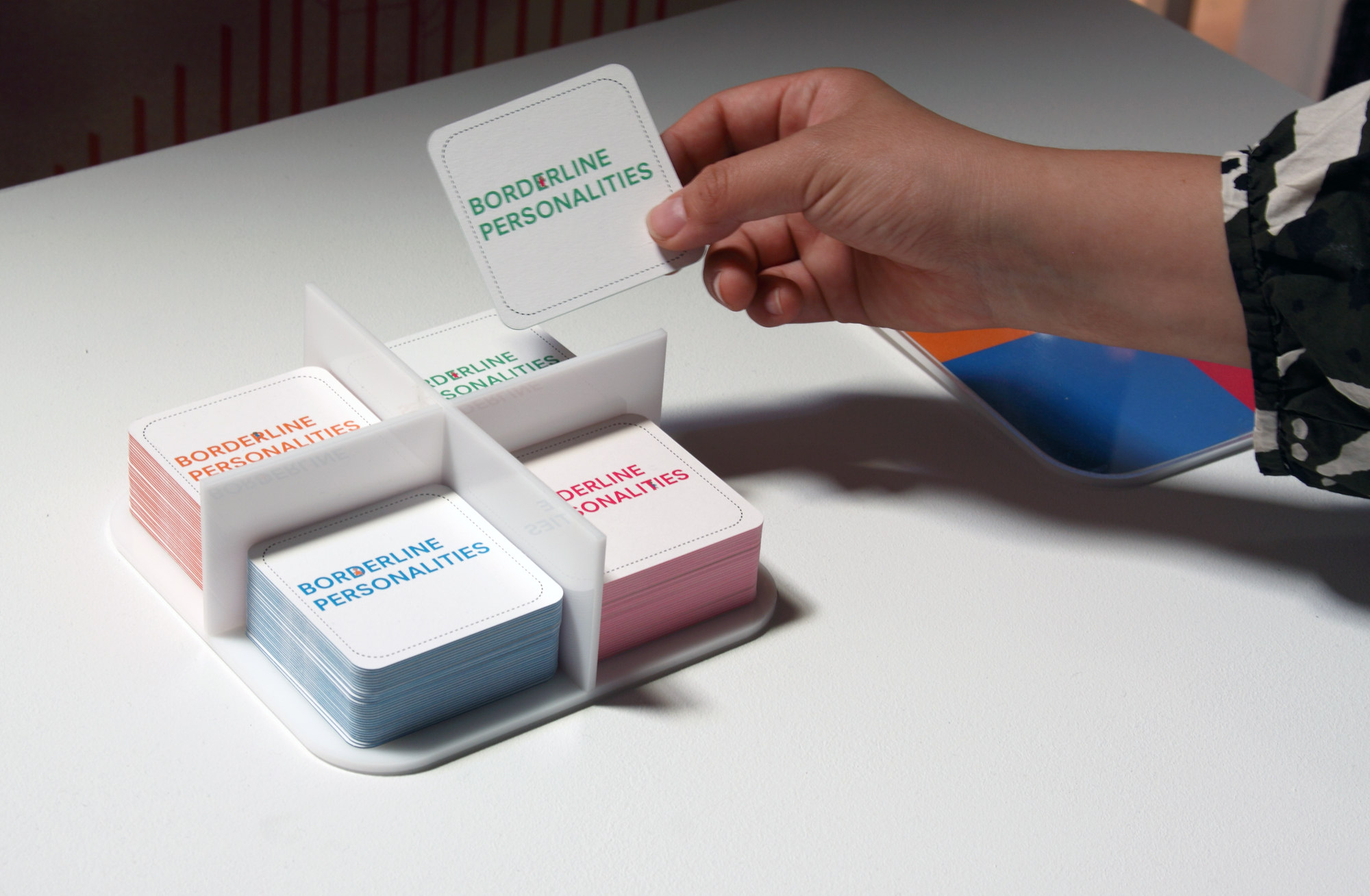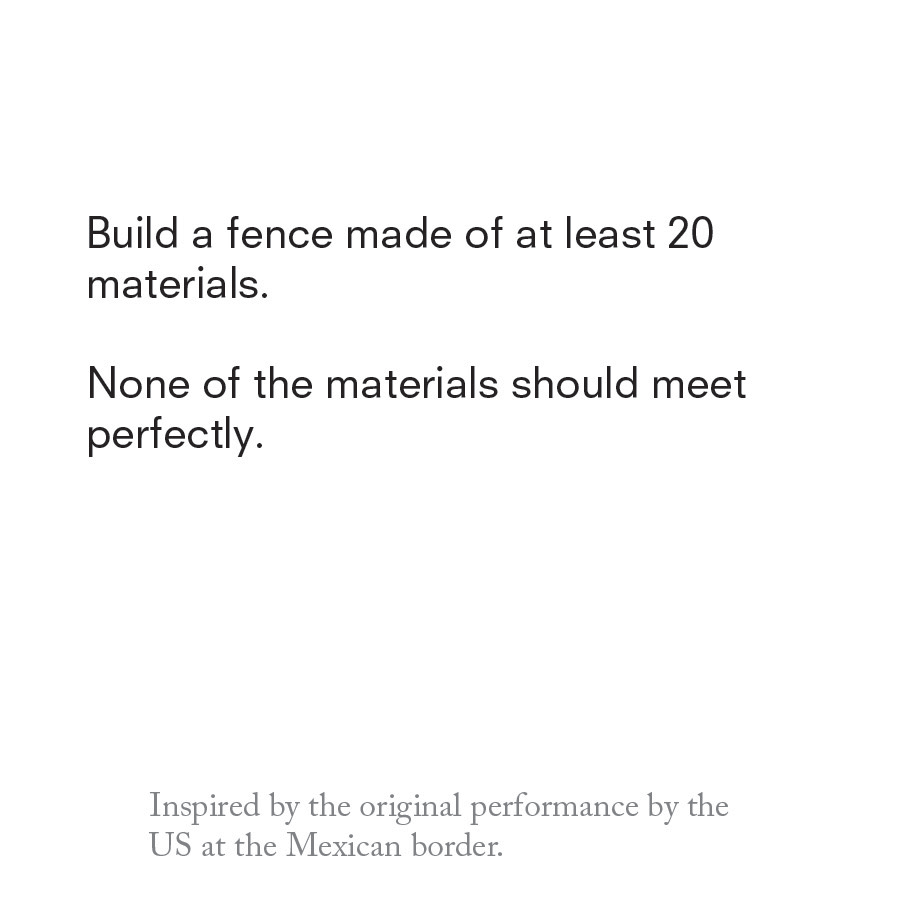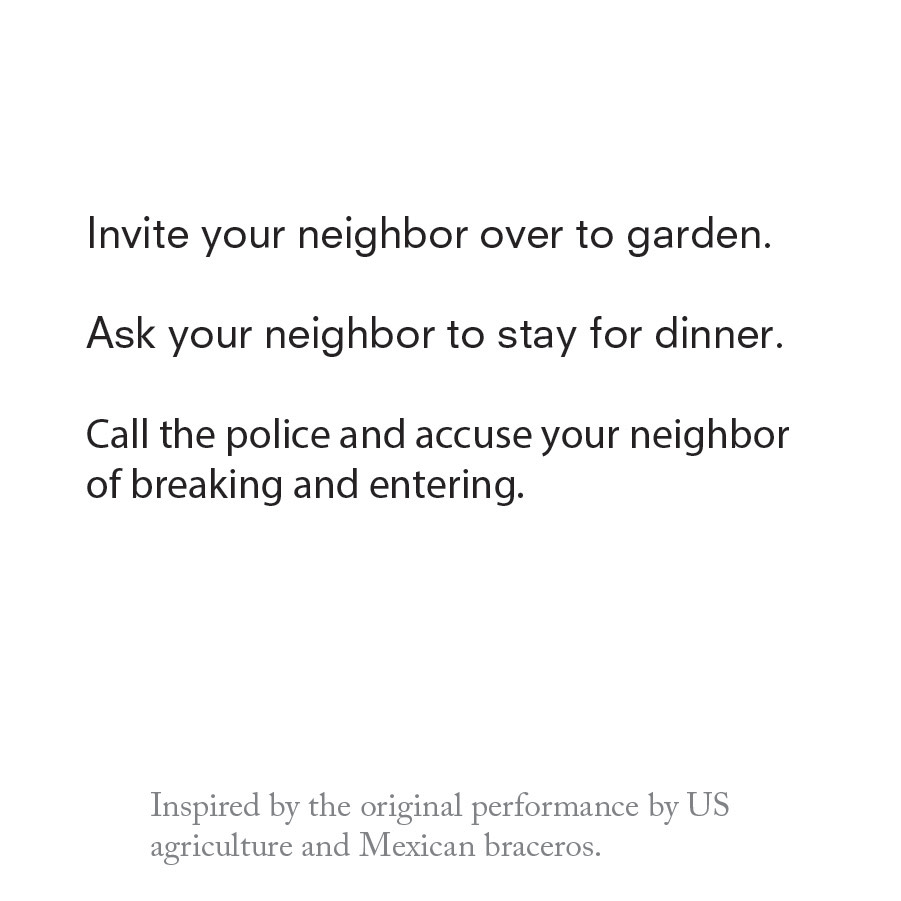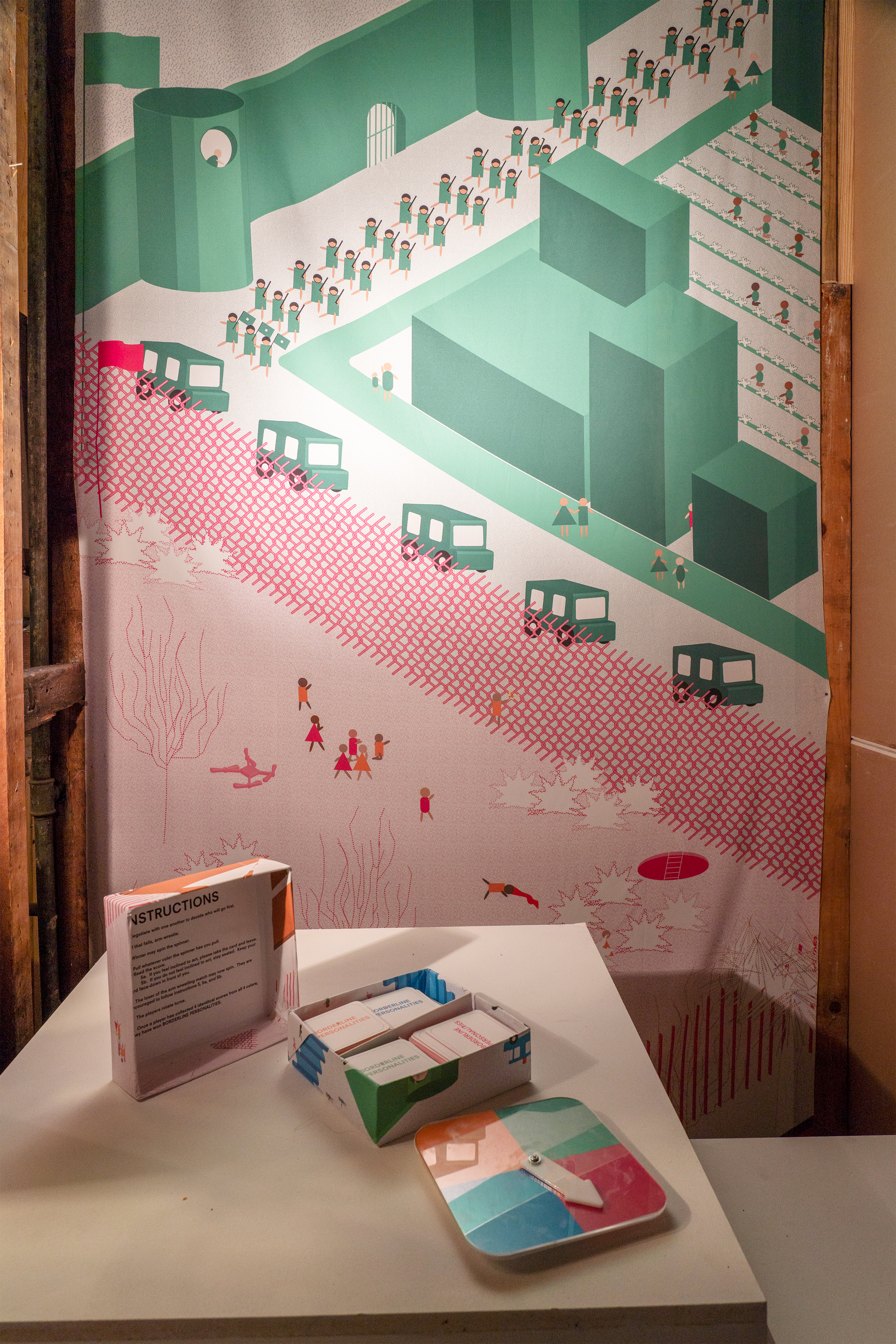Artwork
Borderline Personalities
Spring 2018, Profs. Ann Lui and Iker Gil
Software Illustrator, Photoshop, InDesign
Images
 Ca’Foscari CFZ installation,
Ca’Foscari CFZ installation, Photograph by Iker Gil, 2018.





Walls are the most ubiquitous form of architecture. They shape our movement; they structure our lives. They also render visible the interactions of nation-states. The idea of a border wall presents as tangibly solid and secure, the construction of a national lockbox. But this primeval practice of wall-building undermines the progress we have made. Rule of law through democracy has supposedly superseded the Hobbesian notion that might makes right. Ultimately, a wall reveals the Achilles heel of modern nation-states. It provides a false idea that a 40’ wall cannot be overcome by a 41’ ladder or 5’ tunnel. A wall emerges from a false sense of sovereignty where none exists to stop the flow of people, objects, and ideas. Wendy Brown poignantly asks, “If boundary, sovereignty, and national community are precisely what globalization erodes, how might walls fictively restore these elements of a national imaginary?”1
Borderline Personalities looks at the fiction of contemporary border walls. Research on several case studies is translated into Fluxus-like scores, which ask the audience to act, individually, as if they were political states. Transposing these geopolitical scenarios to the domestic realm highlights their simultaneous absurdity and reproducibility. This project argues that borders do not end at the edge of the wall, but are, in fact, reproduced daily in the actions of citizens. Though each score may seem arbitrary or even ludicrous, each participant of the game must imagine their role in the performance. Participants are challenged to confront how each of us is responsible for reproducing the fantasies of the state at the scale of the individual.
The US Mexico border wall, with its antiquated and enduring mythology reaffirms a delusional state. By presenting a layering of caricatured wall conditions, Borderline Personalities reduces these solid monuments of the ego into ephemeral punchlines. Their heft and might is gutted, their imposing quality reduced to icons. Each “score” is printed on a game card, which graphically corresponds to the border scenario from which the score is derived. At the bottom of each card is an acknowledgement of the original performance as acted by the agents who have contrived the geopolitical interactions. A spinner prompts the participant to choose a card from one of four color-coded stacks. Once selected, the participant can participate in the score, or return the card to the bottom of the stack and move on.
In pointing to the absurdity of what is, we can reconcile with film theorist Mark Bould’s proposition that, “We already inhabit the worst of all possible worlds—the one that actually exists—so perhaps there is no critique left that dystopia can effect. Perhaps, reduced to a spectacular commodity, to obscene surface, it has nothing left to tell us that we do not already know.”2 If, as Bould suggests, we live in the worst of all possible worlds, then the only response we can have is to show the absurdity of the conditions we have come to accept.
Notes
1Brown, Wendy. Walled States, Waning Sovereignty. Zone Books: New York, 2010.
2Bould, Mark. “Dulltopia”. In Global Dystopias, ed. Junot Diaz. MIT Press: Cambridge, 2017.
Exhibited
1 Designer Artist Citizen Site: Exploring Belonging, Università Venice, Italy. Ca'Foscari, Cultural Flow Zone. Partner program of Dimensions of Citizenship, the theme of the US Pavilion at the 16th Venice Architecture Biennale.
5/21-5/31/2019
2Living Architecture. Chicago, IL. 6018|North.
9/3-3/31/2019
Press
1 “ A board game designed by Tizziana Baldenebro includes a deck of cards printed with absurd-but-true scenarios that players must perform; choice samples include “Trip anyone that walks past your house,” inspired by a photojournalist caught toppling Middle Eastern refugees at the Hungarian border, and “Build a flagpole that is taller than your neighbor’s,” based on the shenanigans of North and South Korea. “ Waxman, Lori. “Not the same old immigrant story as hard questions are asked at 6018North gallery” Chicago Tribune, September 20, 2018. Digital copy available here.